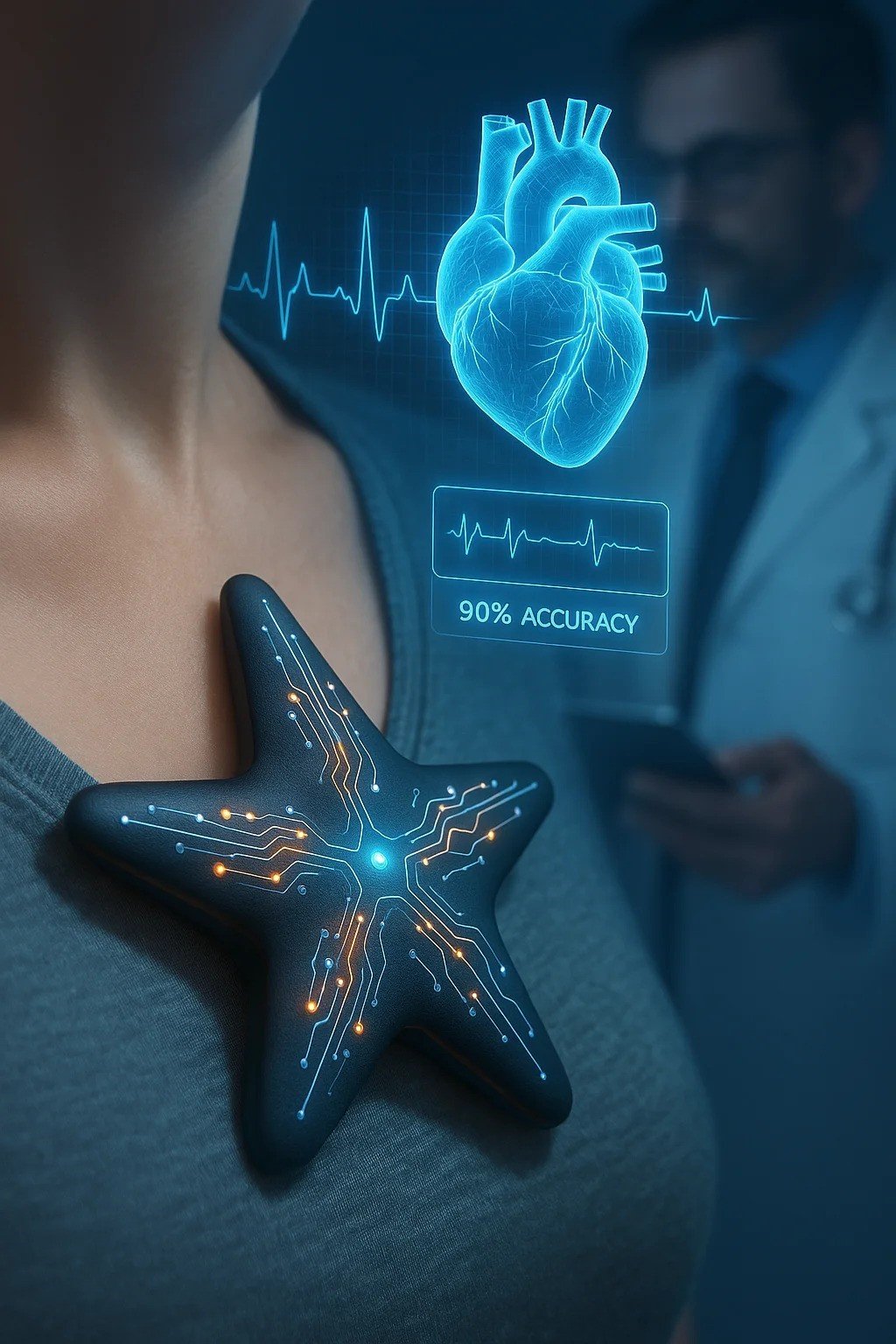Imagine wearing a heart monitor so advanced that it adapts to your movements, filters out noise, and provides over 90% accuracy all while being lightweight, breathable, and wirelessly connected to your phone. This is not science fiction; it’s the latest breakthrough from the University of Missouri (Mizzou), where researchers have developed a starfish inspired wearable tech designed to revolutionize how we monitor heart health.
Most traditional heart monitoring devices, including smartwatches, lose accuracy during movement. Whether you’re walking, exercising, or even gesturing, the motion can interrupt the sensor’s ability to collect clean signals. This limits their usefulness for real-time medical diagnostics.
A Starfish Design Created With a Specific Purpose
Working in the College of Engineering at Mizzou, Sicheng Chen and Zheng Yan used nature-inspired ideas. They found that a starfish uses its five limbs to remain balanced when moving through the water. After applying this principle, the team made a heart monitor with five soft, curved sections that stick to different parts of the chest.
Unlike normal single-point wearable devices, the multi-contact design promises smoother signal quality, allowing better heart data to be collected throughout all your activities.
AI helps provide precise monitoring of heart activity in real time.
What makes this heart monitoring wearable special is how it connects with artificial intelligence. A large collection of heart signals from people with and without heart problems is used to train the system. The sensors from the AI recognize the heartbeat over any motion in the surroundings.
The result? The test is very reliable at finding potential heart problems. As soon as the reading is taken, the data goes to the smartphone app, giving users direct and instant access to their heart rate.
It is very helpful for people with prolonged heart conditions, as it allows them to get ongoing heart-related care without regularly returning to a hospital or clinic.
Everyday life becomes effortless.
Discomfort is a common problem with most wearable technologies. Sticky gel pads can cause irritation to the skin after a while. Thanks to the materials used, the Mizzou heart device is designed to be comfortable and breathable which allows people to wear it all day. Wireless charging is possible on the watch, even while still being worn. This means you can enjoy your movie without being bothered. Such a device is great for patients who will need care for a long period, since it allows for ongoing monitoring.
How it works
Think of each flexible arm as a small, semi-independent sensor node. When you move, not every arm moves the same way, so the system can predict motion noise on one arm from the others, subtract that noise, and leave behind the “clean” cardiac signal. Add adaptive filters and ML models trained on labeled heart data, and the phone can label patterns in real time like a clinician listening to three stethoscopes at once, while jogging next to you.
What’s next?
This is a research-grade prototype, not yet a consumer device. Larger and longer clinical evaluations will be needed across diverse populations and activities, plus regulatory steps, manufacturability, and integration into clinical workflows. Still, the study provides a clear blueprint: bioinspired mechanics + multimodal sensing + on-device AI = reliable, real-world cardiac monitoring.
The Future of Heart Monitoring: Bioinspired + Smart
While the device is still in development, its implications are far reaching. By combining bioinspired engineering, AI powered analysis, and wearable comfort, the Mizzou team has opened a new chapter in digital health monitoring.
The full research study, titled “Starfish-inspired wearable bioelectronic systems for physiological signal monitoring during motion and real-time heart disease diagnosis,” was recently published in Science Advances a testament to the credibility and innovation behind the project.
As we look toward the future, this invention could redefine how we approach preventive healthcare and manage chronic conditions like heart disease. It’s not just wearable tech it’s intelligent, nature inspired health technology at its finest.
References & Further Reading:
The research entitled “Starfish-inspired wearable bioelectronic systems for physiological signal monitoring during motion and real-time heart disease diagnosis” .

